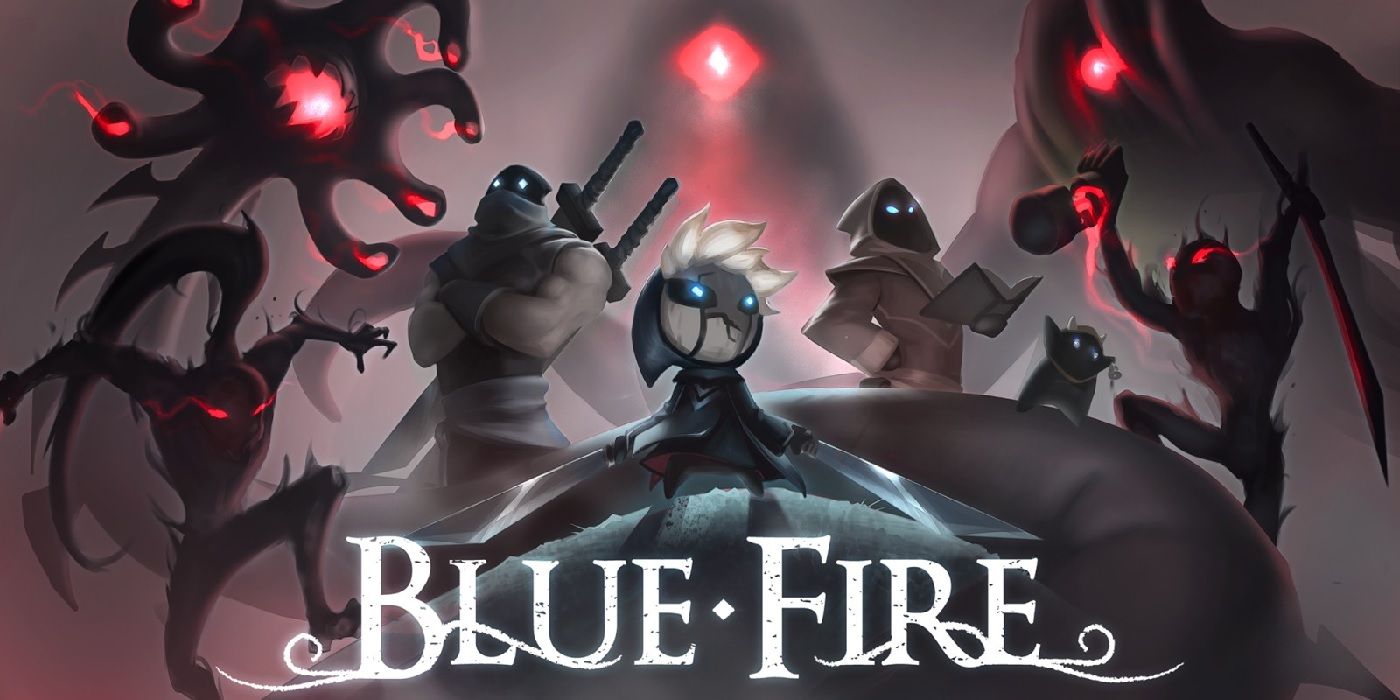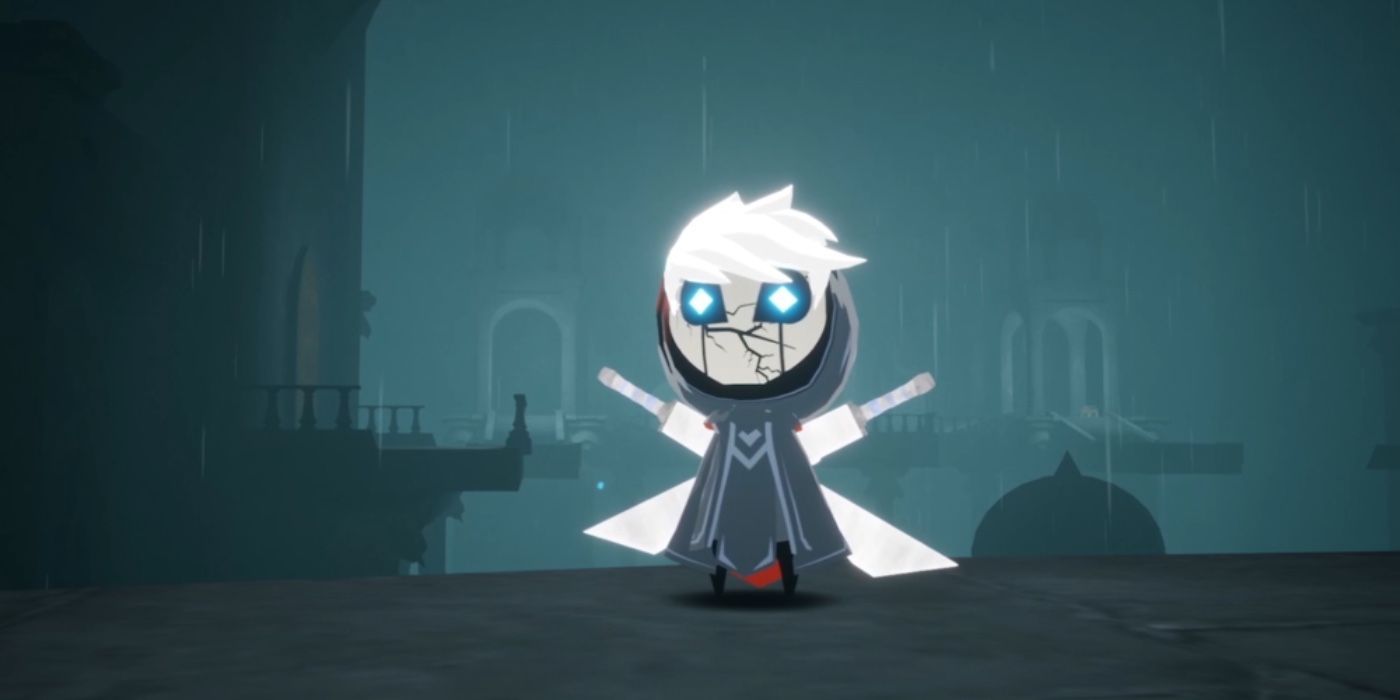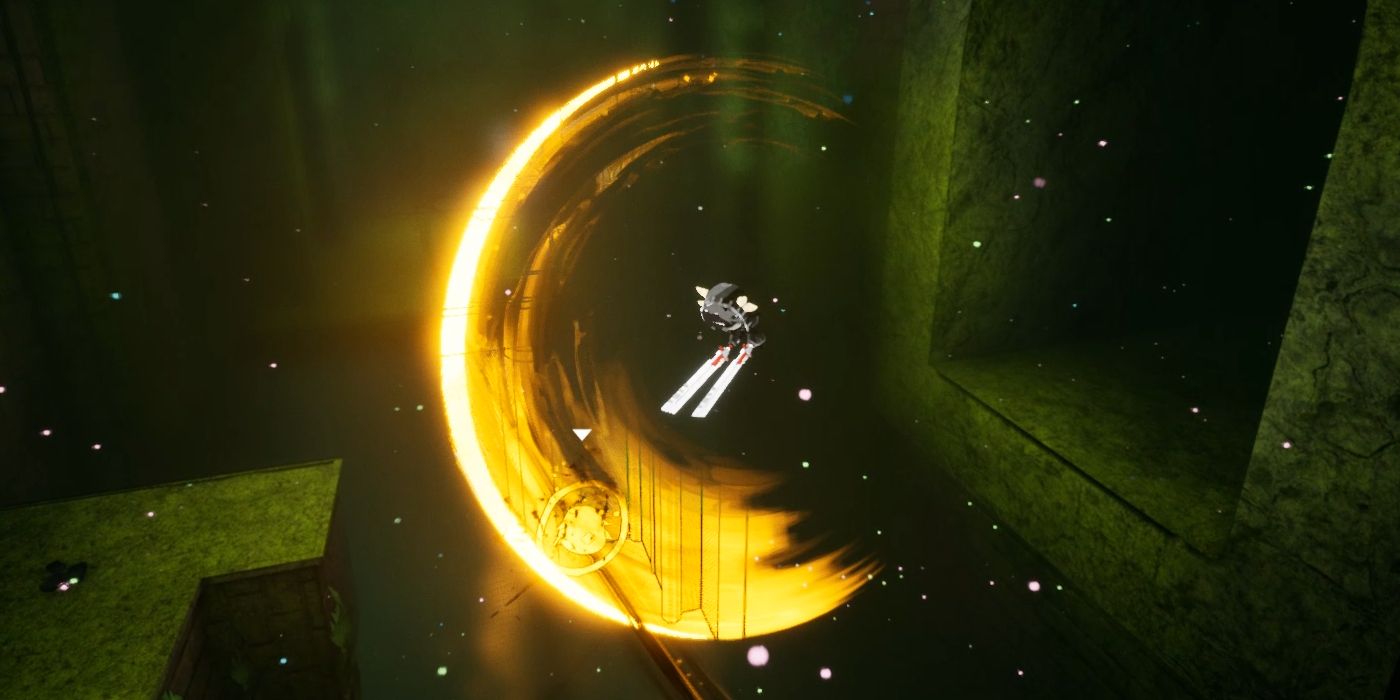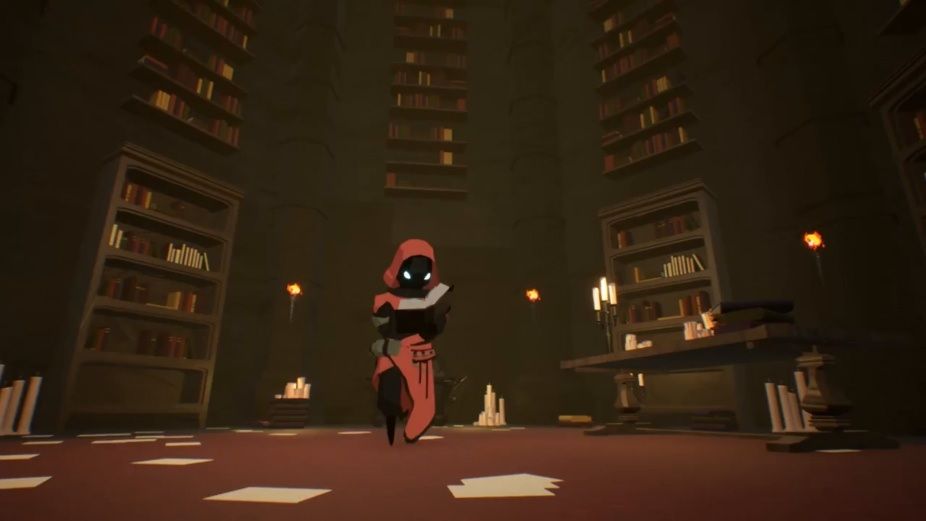When it comes to innovative and landmark video game franchises, FromSoftware's Dark Souls and Nintendo's The Legend of Zelda are hard to beat. Both franchises have helped create their own style of game within existing genres, with unique quirks and gameplay features that make something feel decidedly Souls- or Zelda-like. Blue Fire from developer ROBI Studios takes inspiration from both Dark Souls and The Legend of Zelda, with some 3D platforming thrown into the mix for good measure.
Zelda meets Dark Souls is the best way to describe Blue Fire. The art style looks like something out of Zelda: The Wind Waker but mixed with the darker tones of a Dark Souls game. It features Zelda-style dungeons and progression, while also having tough as nails enemy encounters and death mechanics ripped straight from Dark Souls.
Mixing Zelda and Dark Souls works surprisingly well, and while some Zelda fans may be turned off by the high difficulty, others will appreciate how Blue Fire does something different with the Zelda formula. Unfortunately, the game has a severe lack of polish that keeps it from reaching its full potential, and while there are glimpses of brilliance sprinkled throughout, most will come away unimpressed.
Both the Zelda and Dark Souls games are known for being high quality, highly polished work, but the same can't be said for Blue Fire. Blue Fire suffers from long load times on the Nintendo Switch, and there are things about the game that make these load times especially aggravating. For instance, there are many cases where players will see a door leading to a new area, but upon going through that door, discover that they can do absolutely nothing on the other side. This means sitting through a long load screen to go through the door, and then sitting through it again to return to the previous area.
The Blue Fire load screens get in the way whenever players are trying to grind for orbs as well. Orbs in Blue Fire are the game's primary currency, equivalent to souls in Dark Souls, and players use them to purchase upgrades. Players can also collect ores that they can sell to merchants to get a big influx of orbs immediately, but not every merchant buys ores. What this means is fast-traveling to the merchant that purchases ores, sitting through a load screen, selling the ores, backtracking to the previous save point, fast-traveling to the merchant that's selling the desired item, and sitting through another load screen to do it. It would make more sense for all merchants to not only sell items, but buy them as well. The fact that they don't doesn't add any real challenge to the game - it simply forces players to backtrack, sit through load screens, and waste their time.
The most egregious issue involving load screens in Blue Fire comes when trying to return to one's corpse to reclaim lost orbs. Occasionally, if a load screen separated our character from their corpse, the corpse would simply no longer be there and the orbs would be lost forever. This happened very rarely, but considering how important it is for this mechanic to work, it's a pretty serious problem that it happened at all. Granted, there could have been another explanation as to why the corpse wasn't appearing properly, but the load screen seemed to be the common denominator, and regardless it's an issue that potential players should be aware of.
Evidence of Blue Fire's lack of polish is apparent elsewhere in the game as well. There are numerous typos and misspellings that players will notice during their time with the game, and they'll also have to wrestle with crashes as well. Occasionally players will find themselves able to walk right through locked gates without first completing the puzzle in the room, so sometimes these technical mishaps actually work to make the game easier.
The game also sometimes struggles with frame rate issues in certain areas, with the Temple Gardens area having the biggest problem with maintaining a solid frame rate. Exploring the Temple Gardens in Blue Fire is a pain because it slows the otherwise fast-paced game down to a crawl, which can in turn throw a wrench into how players time their blocks and strikes in combat and can also mess up jumps. This is especially frustrating in a game that requires so much precision, but luckily these frame rate issues only seemed to appear in specific areas.
Most of the time, Blue Fire will let players explore without having to worry about the frame rate, giving them free rein to creatively make their way from point A to point B. The 3D platforming in Blue Fire is one of its best features, and while it demands near-perfection from the player, mastering it is fun. It's also thrilling whenever one finds a new ability like wall-running or double jumping, as these new skills open up a new world of 3D platforming possibilities and will make players want to return to previously-completed areas to reach spots that they couldn't before.
Players typically acquire these new abilities in Blue Fire's dungeons, which are easily the best thing about the game. The dungeons are very Zelda-esque with their puzzles and exploration, with players often having to find keys that will open locked doors and in turn allow them to progress deeper in the dungeons. Whereas the world leading to each dungeon is chaotic and wide open, dungeons are more focused and provide some finer-tuned gameplay. It's in the dungeons where Blue Fire's platforming and combat really shine.
Blue Fire's dungeons are a blast and honestly, the game is hard to put down whenever players manage to struggle their way to one. The only disappointing thing about them are the boss fights at the end. Whereas Dark Souls is known for its bosses, Blue Fire hardly tries to create anything unique or interesting for its boss encounters, with the first boss being a mostly immobile plant that simply sits in the middle of the room and thrashes its vines around. Another boss comes in the form of a fish whose attacks are similarly easy to dodge and can be dealt with without much trouble. The bosses are unimaginative and too easy, which stands in stark contrast to the otherwise brutal difficulty that's found elsewhere in the game.
There isn't a big reward when defeating the bosses in Blue Fire either, as players acquire the new ability earlier in the dungeon and they don't get a boost to their maximum health. Defeating the boss usually means progressing the story and not much else. Instead, players are able to boost their health in Blue Fire by completing platforming challenge rooms called Voids, which, like the dungeons, are more focused and exciting. They focus exclusively on platforming challenges and force players to think outside of the box if they hope to overcome them.
There are glimpses of brilliance in Blue Fire when completing Voids and making one's way through dungeons, but it's all overshadowed by technical issues and some frustrating design choices. Blue Fire lifts a lot from Dark Souls and Zelda, but is unlikely to appeal to diehard fans of either franchise.
Blue Fire is out now for PC and Nintendo Switch. Game Rant reviewed the game on Switch.




